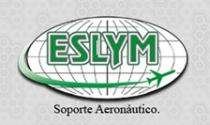Global Feed Additives Market Report 2023: Rising Demand for Meat and Dairy Products Bolsters Growth - ResearchAndMarkets.com
The "Feed Additives Market by Type, Animal Type, Source, Form, and Geography - Forecast to 2030" report has been added to ResearchAndMarkets.com's offering.
According to this research report the feed additives market is projected to reach $51.2 billion by 2030, at a CAGR of 5.3% during the forecast period 2023-2030.
The global feed additives market is segmented by type, animal type, source, form and geography. The study also evaluates industry competitors and analyzes the country-level markets.
Based on type, the global feed additives market is segmented into performance additives, specialty additives, and other types. In 2023, the performance additives segment is expected to account for the largest share of the global feed additives market. The large market share of this segment is attributed to the increasing awareness among the farmers about the benefits of amino acids, minerals, and vitamins; the rising demand for compound animal feed with higher nutrient contents to improve feed intake; and the growing use of performance additives to metabolism and efficiency of feed utilization for economic and eco-friendly livestock production.
Based on animal type, the global feed additives market is segmented into poultry, ruminants, swine, aquatic animals, and other animals. In 2023, the poultry segment is expected to account for the largest share of the global feed additives market. The large market share of this segment is attributed to the growing demand for micro-nutrients in poultry production, consumers' preference for poultry meat & eggs, low production as well as product cost of poultry meat, and high production of compound feed for poultry.
Based on source, the global feed additives market is segmented into synthetic feed additives and natural feed additives. In 2023, the synthetic feed additives segment is expected to account for the larger share of the global feed additives market. The large market share of this segment is attributed to the easier availability of synthetic raw materials, lower production costs, and stronger market penetration. However, the natural feed additives segment is projected to register a higher CAGR during the forecast period. Natural feed additives reduce environmental impact and are considered a safer and more sustainable alternative to synthetic additives. Furthermore, there is a growing market for natural and organic food products. These factors contribute to the growth of this segment.
Based on form, the global feed additives market is segmented into dry feed additives and liquid feed additives. In 2023, the dry feed additives segment is expected to account for the larger share of the global feed additives market. However, the liquid feed additives segment is projected to register the highest CAGR during the forecast period. The growth of this segment is driven by the shift towards liquid supplements due to their improved shelf life and versatility for various applications.
An in-depth geographic analysis of the industry provides detailed qualitative and quantitative insights into the five major regions (North America, Europe, Asia-Pacific, Latin America, and the Middle East & Africa) and the coverage of major countries in each region. North America is slated to register the highest CAGR during the forecast period, mainly due to increasing awareness about the benefits of additives for animal feed, the increase in outbreaks of diseases, and the increasing focus on animal productivity.
Key Questions Answered in the Report
- What is the current revenue generated by feed additives globally?
- At what rate is the global feed additives demand projected to grow for the next 5-7 years?
- What are the historical market sizes and growth rates of the global feed additives market?
- What are the major factors impacting the growth of this market at the regional and country levels? What are the major opportunities for existing players and new entrants in the market?
- Which segments in terms of type, animal type, source, and form are expected to create major traction for the manufacturers in this market?
- What are the key geographical trends in this market? Which regions/countries are expected to offer significant growth opportunities for the manufacturers operating in the global feed additives market?
- Who are the major players in the global feed additives market? What are their specific product offerings in this market?
- What are the recent strategic developments in the global feed additives market? What are the impacts of these strategic developments on the market?
Market Dynamics
Drivers
- Consistent Growth in the Compound Feed Sector
- Rising Demand for Meat and Dairy Products
- Increasing Disease Outbreaks in Livestock
Restraints
- Ban on the Use of Antibiotics in Animal Feed
Opportunities
- Growing Industrialization of the Livestock Sector
- Increasing Utilization of Feed Additives in Developing Countries
Companies Mentioned
- Bluestar Adisseo Co. (China)
- Koninklijke DSM N.V. (Netherlands)
- BASF SE (Germany)
- Cargill Incorporated (U.S.)
- Kemin Industries Inc. (U.S.)
- Alltech Inc. (U.S.)
- Nutreco N.V. (Netherlands)
- International Flavors & Fragrances Inc. (U.S.)
- Evonik Industries AG (Germany)
- Archer Daniels Midland (U.S.)
- ADDCON GROUP GmbH (Germany)
- Biovet S.A. (Spain) Royal AgriFirm Group. (Netherlands)
- Altilis Animal Nutrition (France)
- Land O'Lakes Inc (U.S.)
For more information about this report visit https://www.researchandmarkets.com/r/jngdjo
About ResearchAndMarkets.com
ResearchAndMarkets.com is the world's leading source for international market research reports and market data. We provide you with the latest data on international and regional markets, key industries, the top companies, new products and the latest trends.
View source version on businesswire.com: https://www.businesswire.com/news/home/20230706175481/en/




